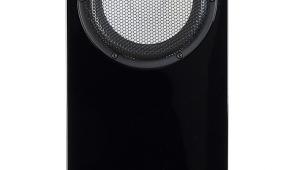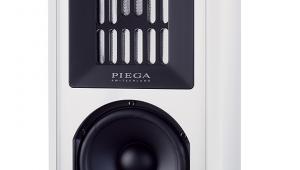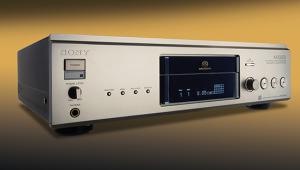Kudos Audio Titan 707/Exposure VXN Active Loudspeaker Page 2
![]() Magnificent Seven
Magnificent Seven
Set up in editor PM's listening room, the front-end was the familiar Melco music library/dCS Vivaldi One combination [HFN Feb '18], here used purely as a line source into the Exposure 5010 preamp. In total we had no fewer than seven (Exposure) boxes between source and speakers, comprising the preamp, crossover and power supply, and four monoblocks. Only two of the power amps were used for the initial passive listening session, with the other two powered up but idling ready for their use in active mode.

Initial impressions when running the system in passive mode were good, with the set-up delivering rather persuasive soundstage focus with Claire Martin's 'tangofied' take on the 'The Man Who Sold The World', from her Time & Place album [Linn AKD 423; 192kHz/24-bit]. True, Martin's voice sounded a little brash, and the piano perhaps rather too jangly, but the accompanying cellos and percussion were well delineated and had good attack and drive.
This same 'fine, if not outstanding' impression carried through to ELP's 'Still... You Turn Me On' from Brain Salad Surgery [Sanctuary/Universal 5308195; DSD64], which saw the Exposure/Kudos system doing all the hi-fi stuff well enough, but lacking a bit of the rasp of those synths. Winding up passive listening with the exquisite jazz of the Espen Eriksen Trio [Never Ending January; Rune Grammophon RCD 2173], it was noticeable that the drums had a slightly ponderous 'playing on plastic barrels' quality to them, and as tracks built there was a hint of a battle going on between the musicians, making instrumental lines somewhat hard to follow, and the listening experience a bit laborious.

On The Money
These characteristics were even more pronounced with the recording of Nick Bicât's Under The Eye Of Heaven [Virgin Classics LCCOD 1] by the London Chamber Orchestra. The combination of synthesised percussion and a 1989 digital recording means that while the bass is fast, tight and reasonably extended, driving the music, the top-end – and in particular that percussion – can sound pretty savage. This in turn gives the whole recording a brash, abrasive edge, which was not soothed when using the Exposure/Kudos system in passive form.
Switching over to active working, the benefits should have been obvious – better drive for each unit, no intermodulation between the drivers and the small matter of having an extra couple of power amps in harness, each of the four now handling a specific frequency band. And you know what? All those gains were up there on the soundstage, not only grabbing the Titan 707s and whipping them into shape, but making it immediately apparent where all the money was channelled – straight into creating a more convincing performance. The Bicât recording filled out in the low frequencies, while that savage top-end was better controlled, not smoothed out or glossed over, and thus a more engaging listen.
With the Espen Eriksen track, the extra sizzle on the percussion was not only obvious but much more realistic, while the three instruments were much better presented and easier to follow. They were now playing together rather than fighting for attention, while the sense of 'strike and decay' on both piano and bass was delicious. In particular, the gutsy percussion opening the track lost some of its overblown, blurry character, and provided a thrilling impetus behind Eriksen's first piano figures, which is just as it should be.

Extra Punch
The same was true with Claire Martin and her cellos, with the inner details of the track revealed, and the interweaving tango rhythms slinking behind her piano and voice to winning effect, helped too by the subtlety with which the minimal percussion is woven into the performance. Keith Emerson's synths gained much better texture on the ELP track – and indeed throughout the whole album – while Carl Palmer's drumming took on some extra punch, sounding faster and leaner, and the movement of Greg Lake's fingers on the guitar strings was also brought out more clearly.
I played the album through, and while I wasn't sure whether the odd errant electronic switching glitch from the synths was characterful or distracting, the fact that they were apparent showed how much more information the Exposure/Kudos system was unearthing in its fully active guise. Indeed, the active ensemble manages to combine much better weight with more control and drive, opening up tracks to reveal more nuance and detail while creating a much easier, more accessible musical experience.
Hi-Fi News Verdict
Crisper, clearer, faster and more detailed: that sums up the gains on offer when taking this Exposure/Kudos system active, the set-up both gaining control and losing some of the restraint heard in passive mode. Best of all, it goes louder cleaner without urging restraint over volume. So it's a win for the active iteration here – provided you have the space, the shelves and the mains sockets for all those black boxes!

























































